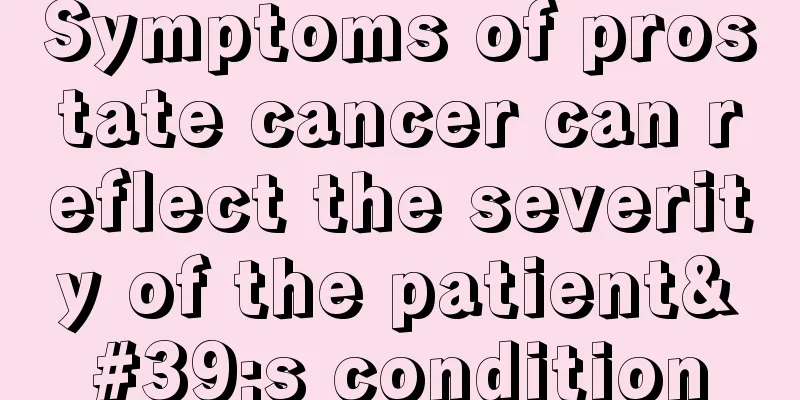The difference between big triple positive and small triple positive

|
The difference between big triple positive and small triple positive refers to the differences in several indicator antigens and antibodies. The common indicators of big triple positive and small triple positive are surface antigen and e antibody, but the difference is that big triple positive is anti-nuclear antibody, while small triple positive is core antibody. Small triple positive is generally transformed from big triple positive. Big triple positive may be a virus carrier, which means that the person has no symptoms, while small triple positive indicates that acute or chronic hepatitis B has occurred. Commonly known as the big three positive, it means that in the two-pair-half test, the surface antigen (HBsAg), e antigen (HBeAg) and antinuclear antibody (HBcAb) are positive. In the first few years to more than ten years after a child is infected with the hepatitis B virus, the virus and the body "coexist peacefully", and the serum shows up as triple positive. Therefore, triple positive also reflects that the virus in the body is constantly replicating and multiplying, and the liver damage is usually mild at that time. For a considerable number of infected people, especially female infected people, the virus can "coexist peacefully" with the body for a long time or for life. We call them "virus carriers", that is, the body carries the hepatitis B virus for a long time, and the liver damage is relatively mild. They can live to be over 60-70 years old without obvious symptoms, and they do not necessarily die of liver disease. They mainly serve as sources of infection. The so-called "small three positive" of hepatitis B means that among the five indicators of the "two pairs and a half" examination of hepatitis B, the surface antigen (HBsAg), E antibody (HBeAb) and core antibody (HBcAb) are all positive. The appearance of "small three positives" indicates acute or chronic hepatitis B and viral replication in the body, which is a state of hepatitis B virus replication. Small triple positive is usually transformed from "big triple positive", which means that the human body has developed a certain degree of immunity against the E antigen. When encountering the following situations, patients with "small three positive" need timely treatment. 1. There are obvious symptoms, such as fatigue, loss of appetite, abdominal distension, discomfort in the liver area, etc. 2. Liver function fluctuates repeatedly, with increased transaminase and serum bilirubin, decreased albumin, etc. 3. Those whose hepatitis B virus deoxyribonucleic acid (HBVDNA) test is positive. The principle of treatment is a combination of restoring liver function, fighting viruses and preventing liver fibrosis. Small triple positive emphasizes the importance of staged treatment The general view on the treatment of hepatitis B is that once HBV-DNA turns negative and big three positive turns to small three positive, then everything will be fine. If small three positive DNA is negative, there is no need to treat it anymore and only regular check-ups are needed. Many patients don't care about it. However, in clinical practice, many patients with small three positive hepatitis B are found to have returned to big three positive status after an accidental check-up a few years later. A few patients have developed early liver cirrhosis. Most patients begin to complain, saying that hepatitis B cannot be cured and will rebound even if cured. In fact, this phenomenon is not surprising. In addition to the reasons of the hepatitis B patients themselves, it is mainly because doctors have not correctly promoted the concept of hepatitis B prevention and treatment, especially the lack of phased treatment methods. The reason 1. Currently, the HBV-DNA quantification method has defects. When the DNA quantity is less than one thousand, it is considered negative. Is it actually really negative? Because the current detection method can only reach one thousand, even if the actual amount of virus is 300, there is still potential activity, but the current detection sensitivity is not enough within one thousand and it can only be counted as negative. Therefore, both Western medicine and traditional Chinese medicine require patients to take consolidation drugs for 3 to 6 months or even longer after the patient's DNA turns "negative", in an attempt to completely suppress the remaining virus. 2. Since the virus replication template is hidden in the liver cells, all current drugs are unable to enter the liver cells (some false advertisements target this statement and claim that they have developed drugs that can enter the liver cells and completely kill the hepatitis B virus replication template to deceive patients). To completely eliminate the virus, we can only rely on the body's immunity, and immunity is dynamic with the change of seasons. This gives residual viruses an opportunity to take advantage of, and a single spark can start a prairie fire. This is why many patients' replication indicators turn negative, but a few years later, due to relaxation of follow-up examinations and phased treatments, they were found to have aggravated their condition and the virus rebounded during accidental follow-up examinations. 3. Staged treatment is selective for patients. For patients who already have small three positive, DNA negative, normal liver function B-ultrasound or occasional mild abnormalities, but always have more symptoms such as liver discomfort in daily life, they should choose spring or autumn for staged treatment. According to Chinese medicine theory, spring corresponds to liver wood, and spring is the season when all things revive and liver qi is most prosperous. Correspondingly, clinically, it is common to see that previously dormant liver disease becomes active again, and HBV-DNA and liver function begin to fluctuate again. Autumn belongs to the lung metal, and metal overcomes the liver wood. Autumn is the season when liver qi is most easily suppressed. Many patients with cirrhosis develop the disease or worsen their condition in the autumn. Clinical experience shows that the impact of seasons on liver disease is objective, so patients with chronic liver disease should choose the appropriate season to adjust and stage treatment according to their own conditions, which is necessary for their own recovery. 4. The drugs available for clinical use must meet the following principles: safety, effectiveness, economy, low drug resistance, good patient compliance, and no risk of dependence or inability to stop taking the drug. Dr. Lu Peng believes that traditional Chinese medicine is the best choice, and can be prescribed individually on a one-to-one basis. As long as the medication is used for the right symptoms, it can effectively inhibit viral replication, enhance the patient's immunity, eliminate discomfort symptoms, improve liver fibrosis, and restore liver function, which are all beyond the reach of Western medicine. 5. The phased treatment plan proposed by Dr. Lu Peng takes one year as one course of treatment, with annual review and a three-month medication period selected in different seasons according to the different conditions of the disease. The patient can stop taking the medicine at other times and just pay attention to his/her daily diet and rest. After three to five years of phased treatment, some patients' surface antigen will turn negative (the annual conversion rate is about 10%), and other patients' liver function, B-ultrasound and DNA will remain normal for several years, which means they are clinically recovered and the phased treatment can be ended. After that, they will only need to be reviewed every two to three years. |
<<: What is the transmission route of Big Three Yang
>>: What are the differences between male and female babies during pregnancy?
Recommend
Can I still get pregnant after ovarian tumor removal?
Can you still get pregnant after ovarian tumor re...
What to do if you get gas poisoning
Gas poisoning is mainly colorless, tasteless and ...
How to relieve the side effects of gastric cancer radiotherapy? There are four ways
The earlier gastric cancer is discovered, the eas...
What does the hepatitis B comparison table look like?
The hepatitis B control table refers to a referen...
What to do if your skin is dry in spring
If you want to effectively improve and solve the ...
Is lung cancer contagious in the late stage? What are the symptoms of late stage lung cancer?
Lung cancer has reached a relatively serious stag...
The early symptoms of melanoma at different stages are different
Melanoma occurs more often in middle-aged and eld...
What causes pyelonephritis?
Pylonephritis is a urinary tract infection diseas...
What should you pay attention to after chemotherapy for small cell lung cancer? Pay attention to these points
During chemotherapy, patients with small cell lun...
Can the magic of toothpaste delay ejaculation?
Toothpaste is a very common thing for people. Its...
Who are the people who are not suitable for eating chicken
We all eat a lot of chicken, but chicken is a kin...
How to cure acute prostate cancer quickly
How to cure acute prostate cancer quickly? Prosta...
Can eating kiwi fruit cure oral ulcers quickly?
Oral ulcers are a relatively common manifestation...
How to lose weight and get chopstick legs in bed
Thick legs are a major problem that troubles many...
Can brain cancer cause sweating?
If a brain tumor patient is weak, he will sweat a...









